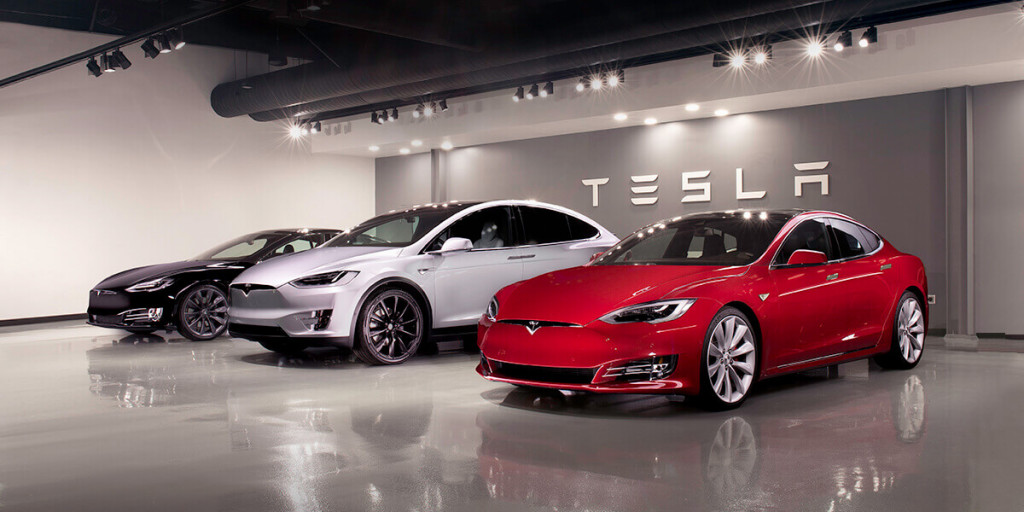Now that Tesla has released its final sales numbers for the end of last year, we finally have a yardstick to measure the company’s sales success.
In the third quarter, Tesla made a point of noting that, with the Model 3 approaching full production, it became the fifth bestselling—non-SUV—car model in America.
On New Year’s Day, the company reported it delivered 63,150 Model 3s from October to December. That’s up 13 percent from 55,840 from July through September.
READ THIS: Tesla cuts prices $2,000, almost hit 250,000 vehicles in 2018
Taking Tesla's sales numbers at face value for the moment, the company says it sold more Model 3s in the third quarter than some entire brands, including some of its chief competitors, including Acura, Audi, Cadillac, and Infiniti.
Other rivals were also feeling the heat from Model 3 sales. In total Lexus sold 71,107 vehicles and BMW sold 85,949, according to sales numbers from Automotive News (subscription required.)

2018 Tesla Model S and 2018 Tesla Model X
Model 3 sales for Q4 weren’t that far behind entire affordable brands such as Mazda (65,203) and Volkswagen (87,836).
And that’s just one model from Tesla, versus other brands’ entire lineups.
It’s not a direct comparison, because Tesla’s numbers include Canadian sales, while those from other brands are only in the U.S. Still, in the third quarter, Tesla sold about 1,500 Model 3s in Canada, as it focused sales there to delay the expiration of its federal tax credit in the U.S. So the numbers aren’t far off.
Whole lineups
Counting the Model S and Model X (which are exported in greater proportion), the company sold 75,100 cars in the U.S. in Q4, according to Automotive News numbers, more than Lexus (71,107), Audi (55,903), Buick (51,627), Acura (44,451), Infiniti (44,031), Cadillac (41,462), Lincoln (28,307), or Volvo (24,224).
Only BMW and Mercedes sold more, at 95,710 and 101,047, respectively. Using Tesla’s own number of 90,700 sales for the quarter wouldn’t change that order, even though Tesla’s number includes sales of all three of its cars in Canada, and the Model S and Model X around the world.
Head-to-head
When it comes to direct competitors to the Model 3—upscale sedans costing $45,000 to $80,000—the Model 3 trounces all competitors, with the next closest models, the Mercedes-Benz C-Class and the Lexus ES coming in with about 18,000 and 14,000 sales respectively for the quarter. BMW sold 9,847 3-Series sedans, though it has sliced much of that market into niche products such as the 4-series.
DON'T MISS: Tesla Model 3 is fifth bestselling car in U.S., production still short of profitability goal
For the quarter, the Model 3 outsold such mainstays of American roads as the Jeep Grand Cherokee and Wrangler, the Subaru Forester and Outback, and the Honda Pilot. It almost conquered the Toyota Highlander, which had 63,812 sales, and wasn't far behind the Toyota Corolla (68,564) and the Honda Civic (70,724) for the quarter. With its slow production ramp-up early in the year, however, it couldn't approach those top-selling cars for the full year.
Annual sales
Tesla’s slow ramp-up to full Model 3 production was one of the major stories of the year, and the car didn’t start posting big sales numbers until Q3, so many of its sales look less impressive on an annual basis.
For the full year, Mercedes-Benz, BMW, Lexus, and Audi—even Mazda and VW—sold more cars than Tesla. Many of those brands, though, sell full lineups of cars and SUVs in multiple sizes and formats (front-wheel drive/rear-wheel drive; sporty, luxurious, car- or truck-based, for example.) Tesla sells three models: two luxury cars and a crossover SUV.
CHECK OUT: Is the Tesla Model 3 the top-selling car from an American brand?
Head-to-head against direct competitors for the full year, the Model 3 still outsold all comers, selling 138,000 sedans in the U.S. according to Automotive News, compared to 60,409 for the Mercedes C-Class, and 48,484 for the Lexus ES (counting both its V-6 and hybrid versions). Tesla sold about three times as many Model 3s in the U.S. as BMW did 3-Series.
It remains to be seen how reduced tax credits and not-quite-as-reduced prices, or Tesla’s backlog of Model 3 deposits from customers who seem to be awaiting lower-priced cars, will affect the sales race in 2019. One thing is clear: With Tesla expanding Model 3 sales to Europe and China in the first quarter of 2019, we won't get this direct a comparison of the numbers again soon.












